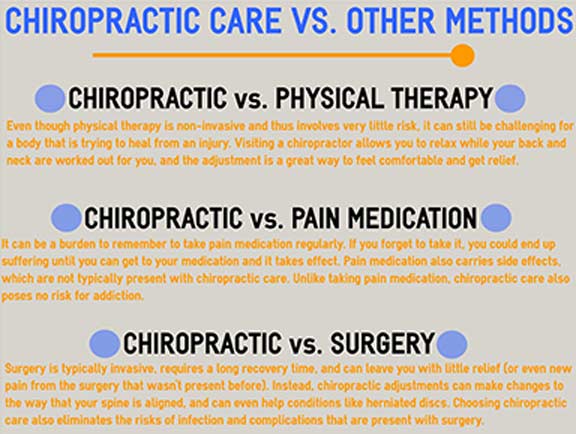The Role Of Position In Neck And Back Pain: Tips For Achieving And Preserving Good Placement Throughout Your Day
The Role Of Position In Neck And Back Pain: Tips For Achieving And Preserving Good Placement Throughout Your Day
Blog Article
Material Develop By-McKinley Preston
Maintaining appropriate pose isn't just about staying up straight; it's about aligning your body in such a way that supports your spinal column and minimizes the danger of pain in the back. The means you sit, stand, and move throughout the day can considerably impact your spinal health. However how exactly can you guarantee good placement continually, also throughout hectic days loaded with numerous tasks? Allow's delve deeper right into the refined yet impactful changes you can make to your day-to-day regimen to keep your back happy and healthy.
Relevance of Proper Position
Correct posture is important in preserving a healthy and balanced back and avoiding pain. When you rest or stand with excellent pose, your spinal column is in placement, decreasing strain on your muscle mass, tendons, and joints. This positioning allows the body to distribute weight evenly, avoiding too much stress on certain locations that can bring about pain and pain. By keeping your spine appropriately lined up, you can likewise enhance your breathing and food digestion, as slouching can press body organs and restrict their capability.
Additionally, preserving integrative can boost your general look and positive self-image. When you stand tall with your shoulders back and head held high, you emanate self-confidence and show up more approachable. Great stance can also make you feel much more invigorated and sharp, as it advertises correct blood circulation and enables your muscle mass to function effectively.
Integrating correct position into your daily routine, whether resting at a desk, strolling, or exercising, is important for preventing back pain and promoting total well-being. Keep in mind, a small adjustment in how you hold on your own can make a significant difference in exactly how you really feel and operate throughout the day.
Common Postural Mistakes
When it pertains to preserving excellent position, several individuals unconsciously make typical errors that can contribute to neck and back pain and pain. One of the most common errors is slouching or stooping over while sitting or standing. This setting places excessive stress on the spine and can lead to muscle mass discrepancies and pain in the future.
Another usual error is overarching the lower back, which can squash the natural contour of the spine and trigger pain. Furthermore, crossing legs while sitting may feel comfy, but it can develop an imbalance in the hips and hips, causing postural problems.
Making use of a pillow that's as well soft or too strong while resting can likewise affect your positioning and contribute to pain in the back. Finally, continuously craning your neck to take a look at screens or adjusting your placement frequently can stress the neck and shoulders. Bearing in mind these usual postural errors can help you keep better positioning and decrease the danger of pain in the back.
Tips for Correcting Placement
To boost your positioning and decrease back pain, it's essential to focus on making small adjustments throughout your day-to-day routine. Begin by bearing in mind your pose. When resting, ensure chiropractor and massage near me are level on the flooring, your back is straight, and your shoulders are kicked back. Prevent slouching or leaning to one side. Use ergonomic chairs or cushions to sustain your lower back.
When standing, distribute your weight uniformly on both feet, maintain your knees somewhat curved, and tuck in your pelvis. Involve your core muscular tissues to support your spinal column. Take breaks to extend and walk if you have a sedentary task. Include exercises that reinforce your core and back muscular tissues, such as slabs or bridges.
While sleeping, use a cushion that sustains the natural contour of your neck to keep proper back alignment. Avoid sleeping on your stomach, as it can strain your neck and back. By bearing in mind these suggestions and making small changes, you can gradually correct your alignment and alleviate neck and back pain.
Conclusion
Bear in mind, preserving excellent stance is key to avoid back pain and advertising spinal health and wellness. By being back pain cause of your positioning, dispersing weight evenly, and involving your core muscles, you can lower strain on your back and decrease the threat of pain and injury. Integrate ergonomic assistance, take routine breaks to extend, and reinforce your core and back muscular tissues to keep appropriate positioning throughout the day. Your back will certainly thanks for it!
